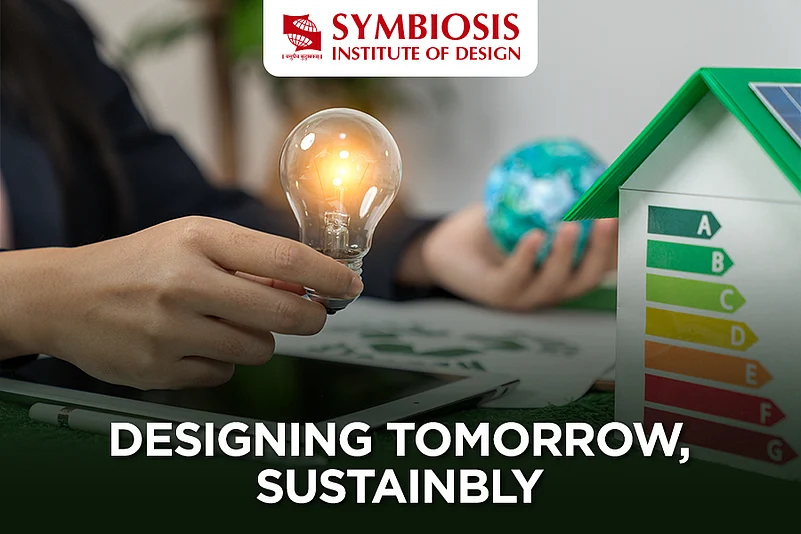In a world that is rapidly being characterised by complexity, from social inequalities to climate change, American architect Buckminster Fuller's words ring truer than ever, "The best way to predict the future is to design it." Design, today, has developed far beyond just mere aesthetics to emerge as a powerful tool - capable of reshaping reality and creating a future that is not only visually pleasing but meaningful and sustainable at depth. When infused with empathy, innovation, and social commitment, design ushers in change for the better. This transformation is noticeable across industries as more and more designers redefine creativity with a sense of purpose.
The Purpose of Revolution in Design: Conscious Creativity
From art that balances style with sustainability to universally accessible digital interfaces, designers are paving the way for more thoughtful and impactful innovations. Using biodegradable fabrics, zero waste pattern cutting, repurposing and modular design, the fashion industry crafts durable pieces that are not only gentle to the skin but to the planet as well. With a cradle-to-cradle approach that puts sustainability and social responsibility at every stage of development - from material sourcing to end-of-life disposal - industrial designers are making durable products for circularity, reducing waste and improving energy efficiency. Graphic Designers are using the power of visual elements—colour, space, typography and imagery—to communicate strong messages and inspire action over apathy. Through well-designed posters, logos, and packaging, communication design is cutting through the noise of our information-rich world, inspiring cultural and social expression, and redefining how we interact with the planet and with each other. By including sustainability and user-first thinking in every sketch, stitch and pixel, creators are not just solving problems—they’re future-proofing and shaping a world where innovation and responsibility go hand in hand.
AI in Design: An Assistant to the Creator
While creativity remains at the heart of design, AI is emerging as a key enabler, optimising processes and helping designers focus on their true strength: realising their creative vision for a better world. In a survey by Adobe in 2022, 70% of designers reported that AI enabled tools improved their workflow efficiency by over 30%, allowing them to spend more time on creative thinking. Platforms like Canva and Figma offer real-time user data analysis using artificial intelligence, facilitating data-driven decision making for better user experience and functionality. From creating design patterns to improving user interfaces and automating layouts, AI serves as an indispensable ally. It handles repetitive tasks, streamlines workflows, and analyses behavioural trends at remarkable speeds, yet lacks the emotional capacity, intuition, and wisdom derived from human experience. As a co-creator, AI enhances human ingenuity rather than merely functioning as an efficiency tool. Consequently, the future of design will rely on the synergy between human creativity and AI.
The Inclusive Paradigm Shift
As AI continues to work hand-in-hand with creators to deliver innovation, yet another tectonic shift has laid the foundations of the future - a shift towards inclusivity. Designers of the present are not only creating equitable solutions but are also opening doors to new markets and opportunities by embracing the full spectrum of human experience. In fashion, adaptive clothing lines are emerging, featuring easy-to-use fasteners and adjustable fits for people with disabilities. Architecture incorporates universal design principles, ensuring buildings are accessible and navigable for all, regardless of age or physical ability. For digital designers, accessibility is a top priority. They implement features like screen reader compatibility, customizable text sizes, and colour contrast options to make technology usable for people with visual or cognitive impairments. This shift towards inclusive design broadens the reach of products and services but also fosters a more equitable society where everyone feels valued and represented, regardless of their circumstances and abilities.
Beyond the Boundaries of Design
Design thinking has gone far beyond aesthetics and functionality — it has become a systematic and strategic problem-solving methodology applicable across industries. It has fostered care-first approaches across all disciplines with diverse impactful results. Design thinking helped develop a more compassionate health system with technologies such as wearable devices, remote monitoring tools, and wellness-oriented hospital designs. Educational institutions have applied design thinking to create interactive learning environments that stimulate critical thinking and creativity in students as well as teachers. Leading global online marketplace for lodging, Airbnb used design thinking to go from a simple home-sharing service to a customer-centric, experience-driven marketplace with approximately 300,000 accessibility features across their platform besides listings with step-free entry, roll-in showers, and auditory alerts. Since they launched the ‘Adapted’ category for guests with special needs and abilities in 2022, the company has reported significant increase in bookings and visibility among specially abled users. This cross-pollination of design principles heralds an entire era of holistic innovation, in which collaboration is at the heart of things. As our problems become more intricate and complex, the necessity for designers to engage in dialogue with scientists, engineers, policymakers, and community leaders also grows. This multi-disciplinary collaboration is capable of redefining the meaning of innovation toward a future where good design is a force for the global good.
Designing a Humane Future
As technology and AI evolve, designers carry a significant responsibility to ensure that human needs and values remain paramount. This implies developing products, spaces, and experiences that promote healthy human interactions, well-being, privacy, and independence- finding the perfect balance between adapting to technological advances and human needs.
Designers of today and tomorrow have a huge opportunity and a great responsibility. By embracing new technology, advocating for inclusivity, taking design thinking across practices, and designing people-oriented solutions, designers can make a difference for the better. As they hone their craft and find their voice, every designer must ask: How can creativity turn something great into something even more impactful for the world? The answer to this can change our collective destiny towards a future where innovation and accountability are mutually reinforcing, one in which design becomes an unbeatable agent for positive transformation.
















